The process of converting use engine oil into diesel is an innovative way to recycle waste oil and solve environmental problems while creating sustainable energy. To better understand the process, one should first delve into the main differences between used engine oil and diesel, the technology involved in converting waste oil into diesel, and the equipment required for this conversion.
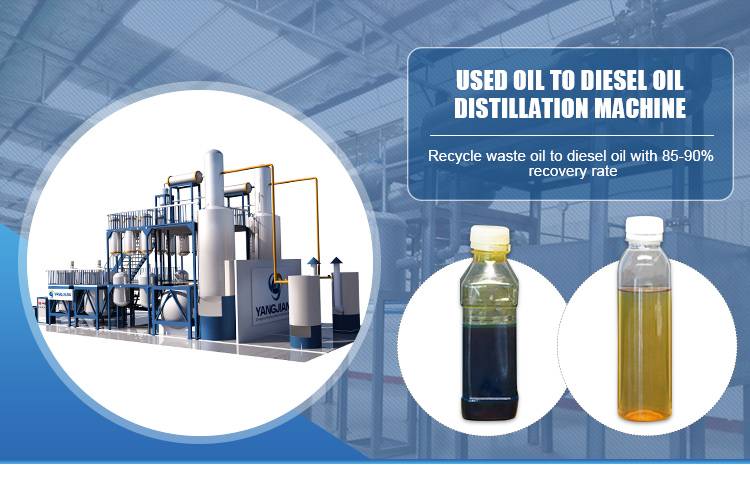
The difference About Used Engine Oil and Diesel
Before knowing how to turn used engine oil to diesel, let’s see the differences between these two types of oils.
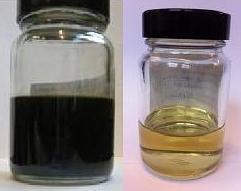
Used engine oil and diesel are both petroleum-derived products, but they serve different purposes and have distinct characteristics:
- Used Engine Oil: This is the byproduct of engine operation, specifically designed to lubricate engine components and reduce wear and tear. Over time, it becomes contaminated with substances like metal particles, carbon deposits, unburned fuel, and other residues from the combustion process. These impurities make it unsuitable for continued use in engines. Additionally, used engine oil may contain oxidized compounds and acids that can harm the environment if not disposed of responsibly.
- Diesel Fuel: Diesel is a refined petroleum product specifically engineered for combustion in diesel engines. It is a clean-burning fuel composed primarily of hydrocarbons, such as alkanes and cycloalkanes, which deliver high energy efficiency. Diesel is formulated to meet strict quality standards, ensuring it burns efficiently and minimizes harmful emissions.
The key difference lies in : while diesel is a clean and stable fuel ready for immediate use, used engine oil is a degraded product requiring treatment and purification to make it suitable for repurposing, such as converting it into diesel.
What Technology Used in Turing Used Engine Oil to Diesel
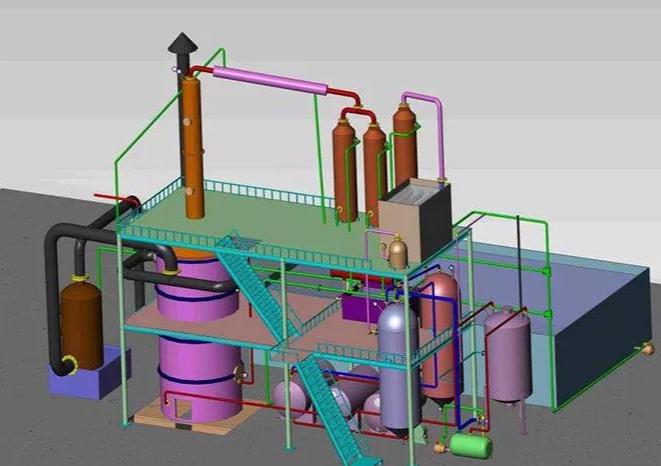
The process of converting used engine oil into diesel fuel relies on advanced technologies to purify and refine the waste oil, transforming it into usable fuel. The primary methods used for this conversion are below:
- Catalytic Cracking: Catalytic cracking is a process used to convert complex hydrocarbons in used engine oil into smaller, simpler molecules similar to those found in diesel fuel. In this method, a catalyst is introduced to the oil within a high-temperature reactor, promoting the breakdown of long-chain hydrocarbons into shorter ones. This approach not only refines the oil but also removes many impurities present in the original used oil, resulting in a cleaner final product.
- Distillation: Distillation is a widely used method for converting used engine oil into diesel. During this process, the oil is heated to high temperatures, causing its components to evaporate at different boiling points. The lighter hydrocarbons, resembling those found in diesel fuel, vaporize and are subsequently condensed back into liquid form. Meanwhile, heavier impurities and contaminants are left behind as residue. This technique effectively separates the diesel-like fraction from the oil.
- Hydrotreating: Hydrotreating is a more advanced process that uses hydrogen to break down contaminants such as sulfur, nitrogen, and carbon. During hydrotreating, the used engine oil is exposed to high pressure and temperature in the presence of hydrogen gas. This reaction helps remove impurities and improve the oil’s quality by transforming it into a cleaner, more stable product. The end result is a fuel that is closer in quality to traditional diesel.
Each of these technologies plays a key role in purifying and refining the used engine oil to create a fuel that can be used in diesel engines. While distillation is the most common and straightforward method, hydrotreating and catalytic cracking are used in more advanced setups for higher-quality diesel production.
What Equipment Can Be Use for Used Engine Oil to Diesel
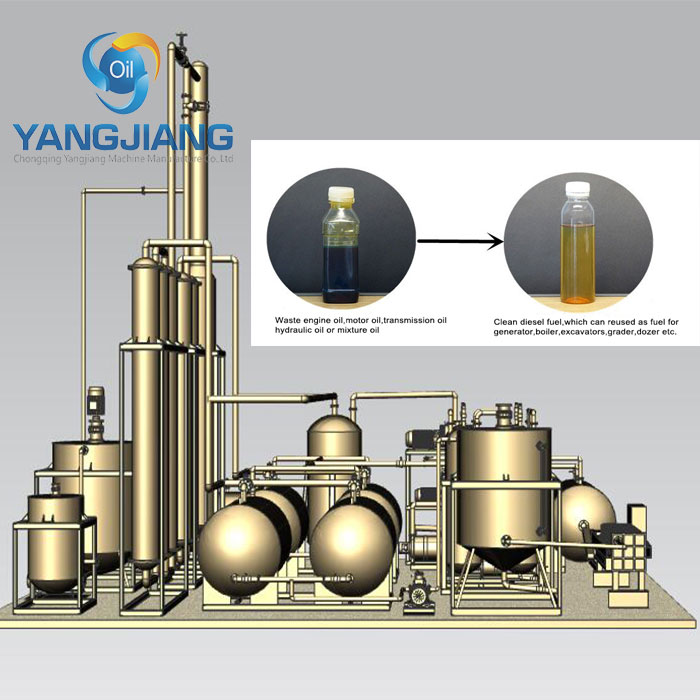
To transform used engine oil into diesel fuel, specialized equipment is necessary to handle the refining, purification, and separation processes. The equipment required for this conversion typically includes:
- Distillation Units: Distillation plays a crucial role in transforming used engine oil to diesel. These units comprise several key components, such as a distillation column, heating furnace, condenser, and cooling system. The waste oil is heated in the furnace, causing the lighter hydrocarbons to vaporize, which are then condensed back into liquid diesel. The distillation unit effectively separates contaminants and byproducts, producing cleaner fuel.
- Hydrotreating Reactors: Hydrotreating reactors are used to introduce hydrogen into used oil, eliminating impurities such as sulfur, nitrogen, and heavy metals. Operating under high pressure and temperature, these reactors facilitate chemical reactions that enhance the oil’s quality. Equipped with catalysts, hydrotreating reactors improve these reactions, resulting in cleaner oil that meets the standards required for diesel fuel.
- Catalytic Cracking Units: Catalytic cracking units are used to break down the long-chain hydrocarbons present in the used engine oil into smaller, more useful molecules that resemble diesel fuel. This process takes place in a cracking reactor, where the oil is exposed to a catalyst that helps speed up the chemical reactions. The catalytic cracking unit also separates the desired fuel from other byproducts, improving the overall yield of diesel fuel.
- Filtration and Purification Systems: Before used engine oil can be refined into diesel, it must undergo purification to remove contaminants such as dirt, water, and metal particles. Filtration systems, centrifuges, and chemical treatment units are employed to cleanse the oil. These purification processes ensure the oil is free of impurities prior to distillation or other refining methods, guaranteeing that the resulting diesel fuel meets stringent quality standards.
Each piece of equipment plays a critical role in turning used engine oil into diesel, ensuring the conversion process is efficient and the resulting fuel is of high quality. Whether for large-scale commercial operations or smaller, more compact systems, the right used oil to diesel plants is necessary to manage the complexities of recycling waste oil into usable energy.
Do You Need Used Engine Oil to Diesel Machines?
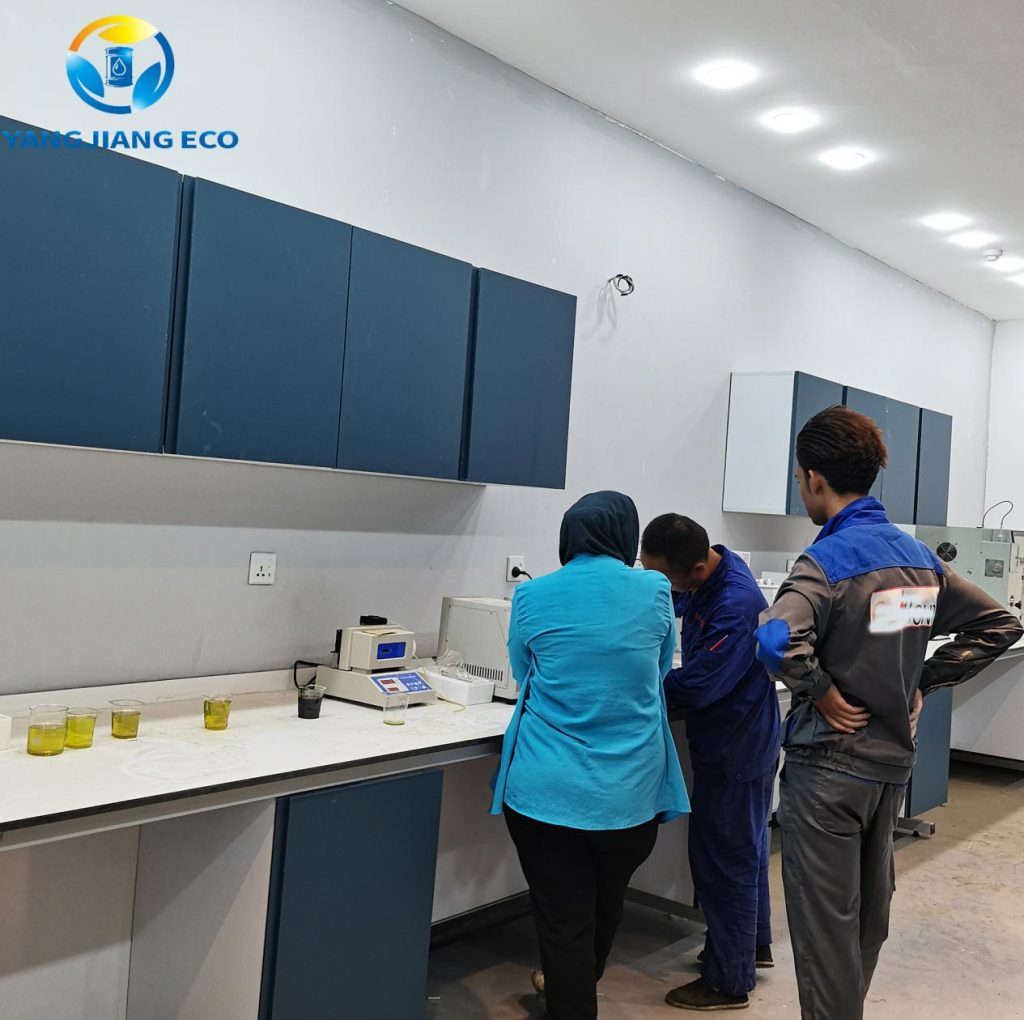
To efficiently turn used engine oil into diesel, specialized “Used Oil to Diesel” machines are required for you. These machines typically come as integrated units that streamline the oil recycling process, making it more cost-effective and accessible.
YANGJIANG is a leading manufacturer of oil recycling and refining equipment, including machines specifically designed for converting waste oil into diesel. Our Used Oil to Diesel Distillation Machine employs advanced distillation technology to purify and refine waste engine oil into high-quality diesel fuel. YANGJIANG also offers comprehensive services, including project management, equipment design, installation, and training, ensuring efficient, pollution-free oil recycling. With a focus on high-quality products and excellent after-sales support, we provide an optimal solution for businesses aiming to recycle waste oil into valuable diesel fuel.
For more details, visit YANGJIANG’s official website, or contact us.


